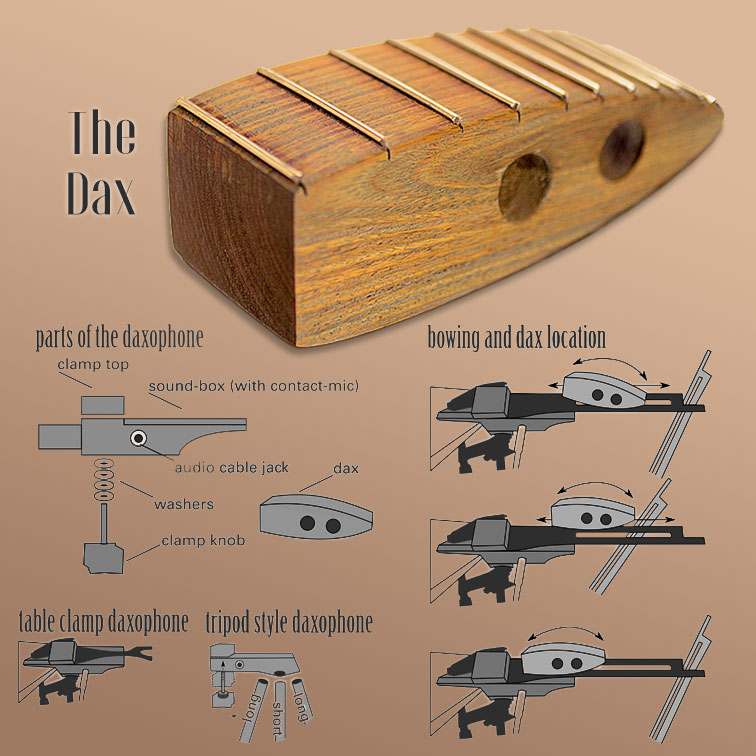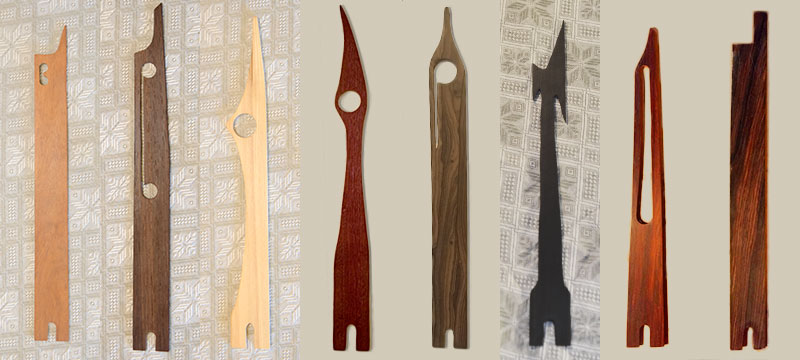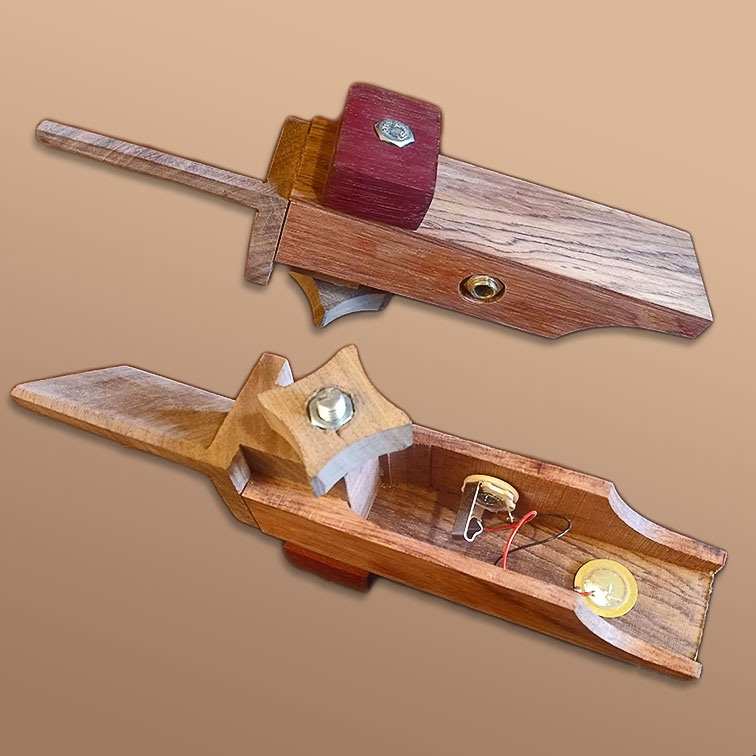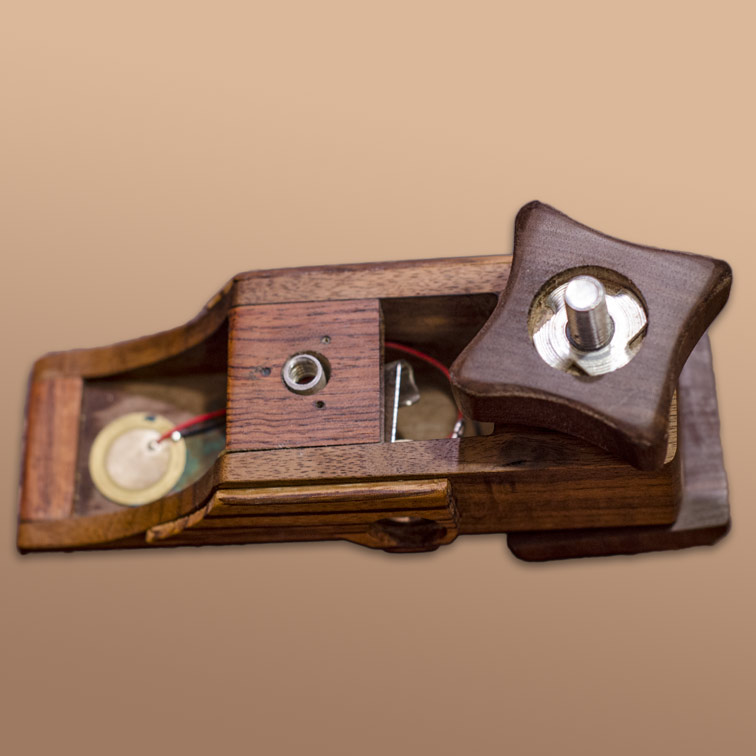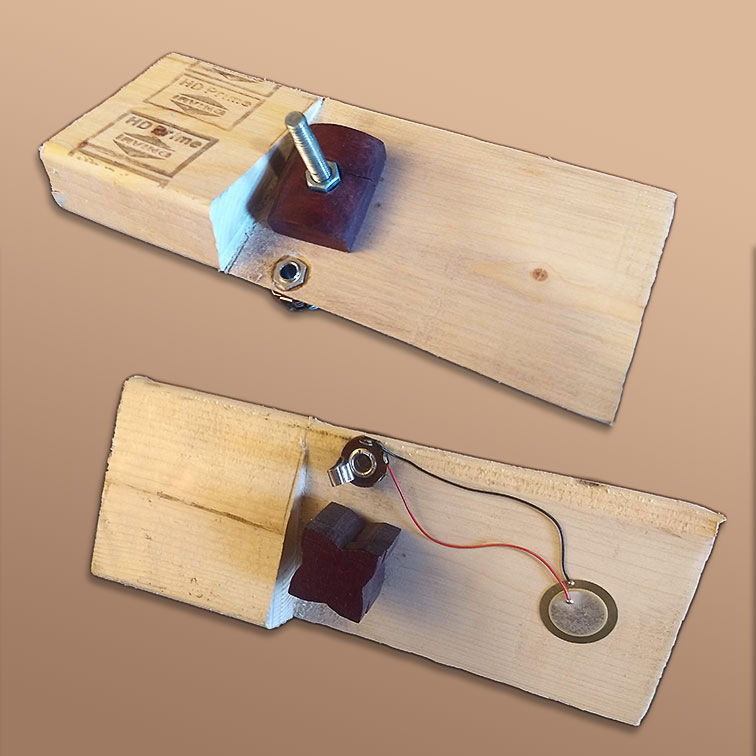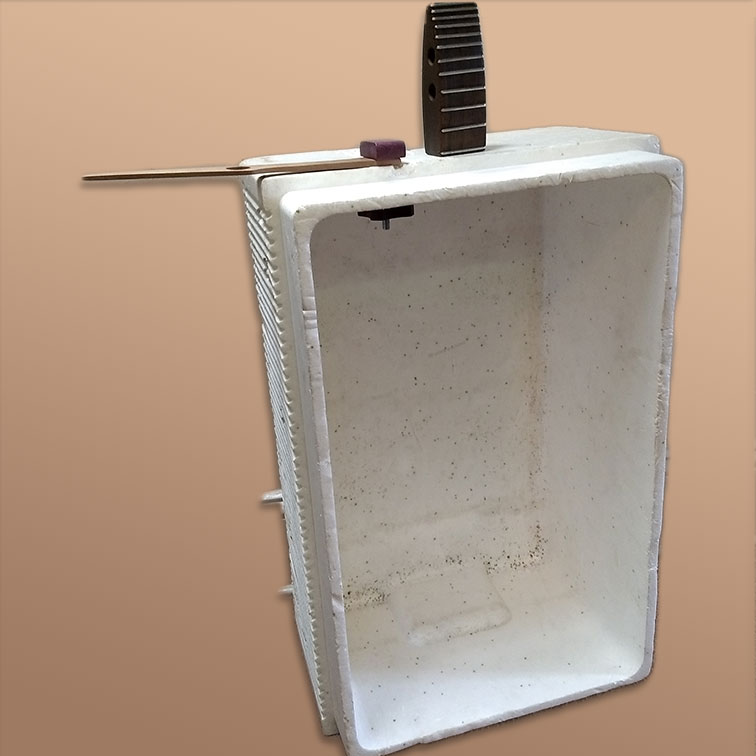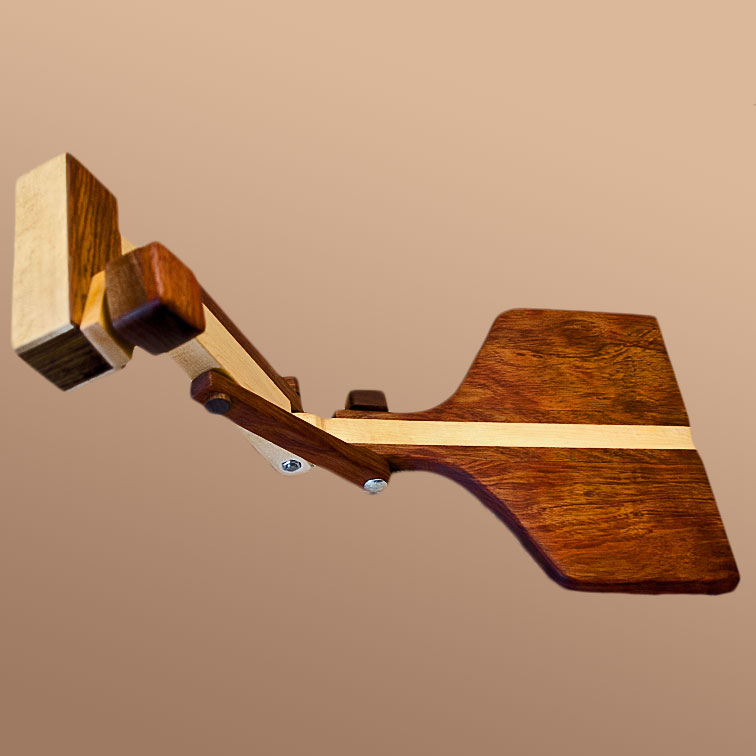Samuel Burt has been building daxophones since 2011, sending them to Belgium, France, Germany, the UK, and all over the United States. This page provides information about the instrument and pictures of Burt's creations.
Daxophones sing, squawk, squeel, chirrup, grunt, growl, and cackle. Their fluid approach to pitch is similar to that of a theremin or bowed saw. The wood adds natural resonances that mimic the human voice.
A typical performance involves clamping a long piece of wood to the body then bowing the wood. This is no simple task. The daxophone virtuosi have mastered delicate variations in bow pressure and placement. They must also take care of the placement of the dax, a heavy teardrop-shaped piece of wood that stops the vibration at select points along the length of the wooden tongue. In combination, these manipulations allow a performance that is akin to playing a modular synthesizer or chains of guitar pedals, with complex, unpredictable results.
The body is just an amplification surface with a piezo microphone element inside. Other small objects can be placed atop and amplified.
In order to play the daxophone, you will need a bow. German bass bows work great. You'll also need an amp. Acoustic guitar amps sound fantastic, but any powered speaker will work.
If you plan to plug into a mixer, consider going through a Direct Input box, because the daxophone's piezo has a really high electrical impedance. You might also consider a piezo preamplifier, although this isn't strickly necessary to get a desirable sound. A volume pedal is useful not only to bring down the level when its too strong but to also silence the daxophone while swapping out tongues. A tasteful level on a reverberation pedal can give the daxophone a little more sustain while a well-chosen compressor pedal can help control some of the strong spikes of direct signal that the daxophone can generate in some circumstances.
The daxophone can sound a bit like an ondes Martenot. I've constructed a diffuseur métallique from a speaker cabinet, an amplifier, an audio transducer, and a gong. I've also got parts to build a palme diffuseur. Playing the daxophone through non-traditional speakers can result in new, delightful resonances.
The tongue is the core of the daxophone's sound. Each tongue is differentiated by size, shape, wood type, and grain structures. Few tongues provide a reliable two octave playing range. Fewer still, three octaves. Many have wolf tones or yodel points.
When constucting a tongue, consider hard wood with tight grains, about 33 centimeters in length and about 5 millimeters thick. Thinner will result in floppier tongues with low, even subaudible frequencies. Tongues thicker than 6 millimeters will be highly resistant to sounding. Focus particularly on the top edge, where you will bow. Holes will interrupt the continuity of pitch across a tongue, but will also create vocal resonances like "WOW", "YOW", and "WHY". Experimentation is the key to learning! Do the opposite of what I've suggested here!
All of the following recordings feature daxohones and tongues built by Samuel Burt.
Compositions consisting of recorded daxophone sounds:
A composition for an ensemble of two daxophone players and percussion:
Compositions involving daxophone samples that have been radically transformed or sequenced:
An album of daxophone, synthesizer, and other instruments composed by Samuel Burt and Maria Shesiuk:
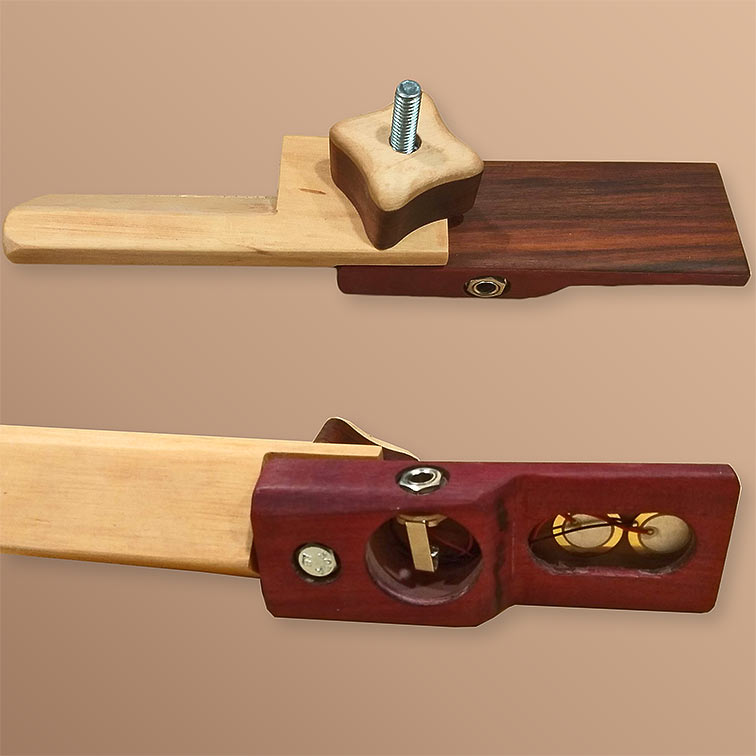
In 2011, I discovered Hans Reichel's wood cut plans and instruction manual. I began building daxophones adapted from his specifications. Anyone with a small amount of woodworking skill and the desire should build a daxophone. It's the most wonderful thing you can do with a piezo contact mic!
Reichel's original design simply clamped onto the side of a table. He encountered performance experiences that involved comically large tables in proportion to his tiny instrument. He evolved the daxophone to stand on its own, with three legs. In the process, he worked out a 45 degree playing angle, which allows better control over bowing and manipulating the dax along the top edge of a tongue. Unfortunately, the stability of this instrument depends on long legs that don't pack and travel well.
With the need for a smaller instrument that can fit in a suitcase, I designed the Desk Badger. It's great for clamping next to your modular synthesizer or on the desk of your home studio. The daxophone has returned to the table now with the convenient 45 degree playing angle.
Pictured is my most recent design. I've left the internals exposed so one can fix solder connections or experiment with placement of the piezo elements which are secured with blue plasti-tak.
Reichel didn't want people to feel constrained by his ideas. He believed that if others experiented, they would discover other ways to make daxophones and tongues. I encourage others to do so, but if you must purchase a daxophone from someone, I build them, one at a time with love. See the bottom of this page for purchasing details. I've posted a copy of Reichel's plans here for anyone looking for a starting place. I'm happy to provide advice, too. Get in touch!
This was my first design for a table clamp daxophone. They are easier to construct and use less wood than the Desk Badger. The latter is hewn from a solid block. The former is more easily built using two side panels.
I'm looking at plans to build a daxophone with Eurorack CV and ENV outputs. This open body plan could accommodate a circuit board.
Similar in construction to the Desk Badger and Open Body Daxophone, this daxophone has embedded threading so it can mount to a standard quick-release tripod.
This is a very simple daxophone design that anyone could make with a bandsaw. To simply even further, one could substitute the wooden clamp for a C-clamp.
Styrofoam also makes a great acoustic resonator. Clamping tongues to a large cooler like those seafood restaurants use both recycles the styrofoam into something useful and provides ampflication without the need for electricity!
Daxophones can take many shapes. The basic requirements are a clamp and a surface that provides amplification to the wooden tongues. Pictured is a design inspired by Daniel Fishkin's Starship Daxophones. Instead of clamping the body to a table or standing it on legs, you sit on a flat paddle while the body extends outward on a hinged arm.
For years I worked with Hans Reichel's design, eventually adding threading to the legs to improve stabilization. This form requires the most precision and care of construction.

You would do to construct a daxophone for yourself, but if you must order one, I am happy to do the work. It's typically a two to three month turnaround. Continental U.S. orders get free shipping. I'll also send a selection of tongues so you can choose what you like.

$500
Made of hand-selected hardwood. Parts include: clamp top with 45-degree playing angle, wooden clamp knob, body, thin ultra-dense top piece, quarter-inch female jack, and internal piezo elements. Assembled and ready to play. Finished with teak oil.
![]()
$175
Made of Lignum Vitae or Argentine Lignum Vitae, the heaviest wood on Earth. Cut to a gentle curve and fretted on one side. Designed for evoking smooth or stepped notes from a daxophone tongue. Also useful on a guitar or inside a piano.

$60 | 5 for $250
Made from a wide variety of tongues in an array of shapes. All hand-cut (no laser burns). Guaranteed one tongue with flexible and wide pitch range. Upon request, I can send you a variety of tongues to try. Buy the ones you like and send back the rest.
Contact me at composer[dot]samuel[dot]burt[at]gmail.com.
